Chilling out with a campervan tour of Norway
See also: Campervan: Travel and Destination Guide
This trip took place prior to the Coronavirus pandemic. We are publishing it for your enjoyment and to help you plan your future trips. Readers must follow the latest government advice before leaving their homes - gov.uk/coronavirus
Words and photos by Mike Waterman
'I wonder what the weather is like in Norway in April?' was the question I pondered in a warm, sunny, very spring-like southwest France.
Having wintered in the Aquitaine region, I was keen to get back on the road. Norway had been on my list for a couple of years, ever since I had seen the distant, spectacular coast from the Denmark to Iceland ferry a couple of years previously.
Preparation was quite minimal. I registered online for the Norwegian tolls, which are all based on cameras and automated charging. Vehicle insurance was checked to see if Norway was covered and some quickly researched details of camping and waterfall locations were downloaded using WiFi at the local library.
I left my base near Bordeaux on a late March morning (in 2019) and, after using motorways the whole 1,300-mile distance, arrived in Hirtshals on the north coast of Denmark two days later, and checked into a campsite.
The Hirtshals to Langesund ferry (Fjord Line) was booked online for 9am the following morning.
On the way to Norway
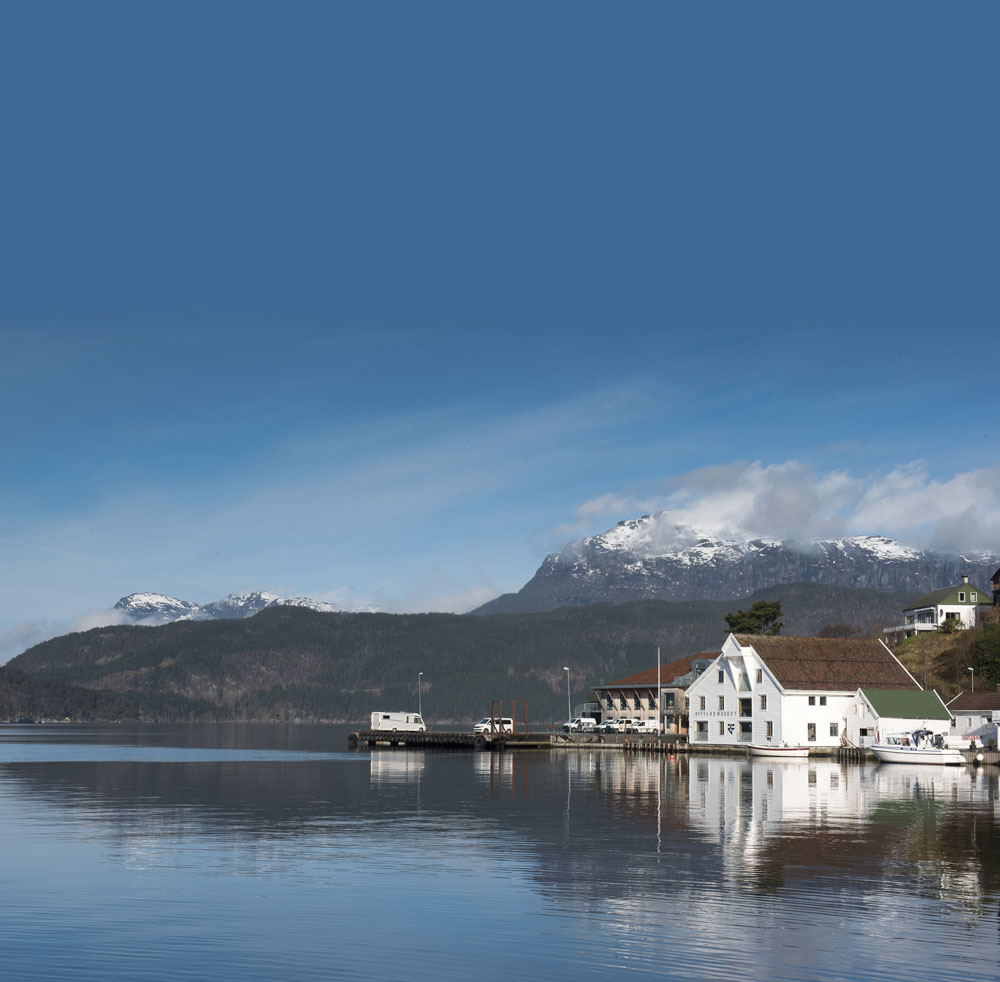
I left a dull and wet Denmark on a pretty much deserted ferry and four-and-a-half hours later arrived in sunny, but chilly, southern Norway. Customs clearance consisted of three questions; did I speak Norwegian or English, was I on holiday, and where was I headed today?
My plan was to head up the western side of Norway. Almost immediately I came across quite a large lake, totally frozen over. Three days before I’d been in shorts and a tee shirt. Now it seemed that I’d returned to winter!
Norway is very campervan-friendly. They have bobilplassen (motorhome stopovers that are often free). Many look a little like car parks, especially those in a
town, but others are on harbours and marinas or in the countryside. Some have electricity for a fee and sometimes showers and toilets are available. Most are detailed online and the key information is clear to a non-Norwegian speaker.
On my first day in Norway, I headed to Båly Havn, near Lindesnes, on the coast between Kristiansand and Stavanger. I arrived to find a marina complex with holiday housing but, on the other side, I spotted four Norwegian motorhomes at the end of a harbour wall in a gorgeous setting. Taking their lead, I parked up. The online information had promised my spot was free. There was a toilet at the marina buildings some 300m away, plus a shower, which could be paid for at the marina office.
My campervan has twin 88Ah batteries, an Eberspächer diesel heater, chemical toilet and a small solar panel on the roof, so a night or two off grid is to be welcomed in exchange for some free camping, especially in such a lovely location.
Norway has 18 National Tourist Routes (Nasjonale turistveger) and marking them on my map with a highlighter pen suggested an obvious route north, simply by joining some of the routes together. That was as much planning as my route received.
Being a very thin and long country, broadly speaking, you head either up or down. This was especially so in April as I discovered that many of the inland routes were still closed for winter, including the famous Trolls Ladder (Trollstigen) series of hairpin bends. Coast equals passable routes and mountains equal closed roads.
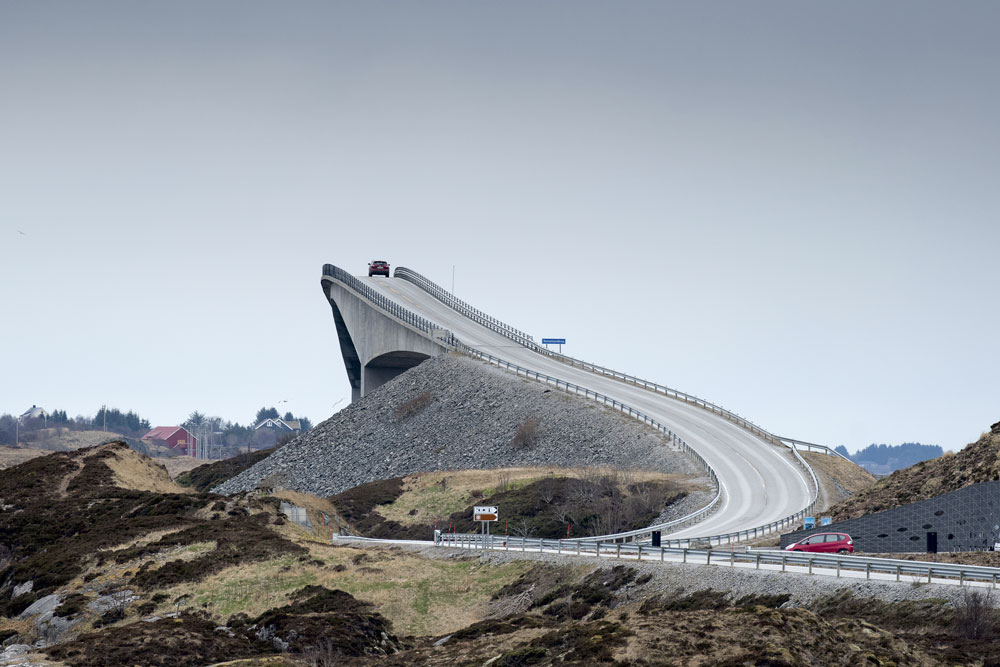
My third day in Norway confirmed my first impression about tolls. They are everywhere. My thought of taking back roads and avoiding them was not at all foolproof. The cameras are thick on the ground, especially in the south. A sign tells you the charge, but I soon gave up trying to keep tabs on what I’d spent. The individual amounts are small, yet the frequency is high.
At least the process is painless; you get an email giving the total monthly figure in sterling and a detailed breakdown of the individual tolls, complete with photos of your vehicle to prove the point. The bill is charged to the credit card specified when first registering.
Heaps of highlights
I stayed in 31 different places in Norway; here are some of the highlights…
Preikestolen Camping, east of Stavanger, is only two miles from the car park for the famous Pulpit Rock, where it cost NOK200 (£16 approx) to park. One of the rangers told me that, during high season, they get between 8,000 and 9,000 visitors but, on the day of my visit, he estimated only 20 or 30. It’s only a four-kilometre (two-and-a-half miles) hike to this much-photographed spot but, mainly due to the weather, I found it tough. The trail marks were getting difficult to see in the mist and, when I got above the snow line, I missed quite a few of the markers. It also started to snow heavily and I really was losing the trail.
I found the rock more through luck than judgement, took a hasty photo and retreated before my footprints – which were my only guide back – disappeared in the snow!
Back in the car park the ranger was still in situ. He was worried about a group of Dutch people who were not properly dressed. I told him about a Chinese woman that I’d met heading up as I was descending. She was wearing trainers and a thin waterproof. He said he hadn’t seen the woman, otherwise he would have stopped her, and that he would wait for her and the Dutch people to return.
I used Preikestolen Camping as a base from which to see Jørpeland and the Jørpeland River Falls and to go even further north for the short hike to see the waterfalls at Sendingfossen and Hiafossen. These two waterfalls on the Storåna river are very close together on the same reasonably short walk. It’s a gentle climb walking upstream, although the path is quite rocky and can be slippery. Both falls are worth the effort on their own, but with two for the price of one and the benefit of downhill on the way back, the reward is high.
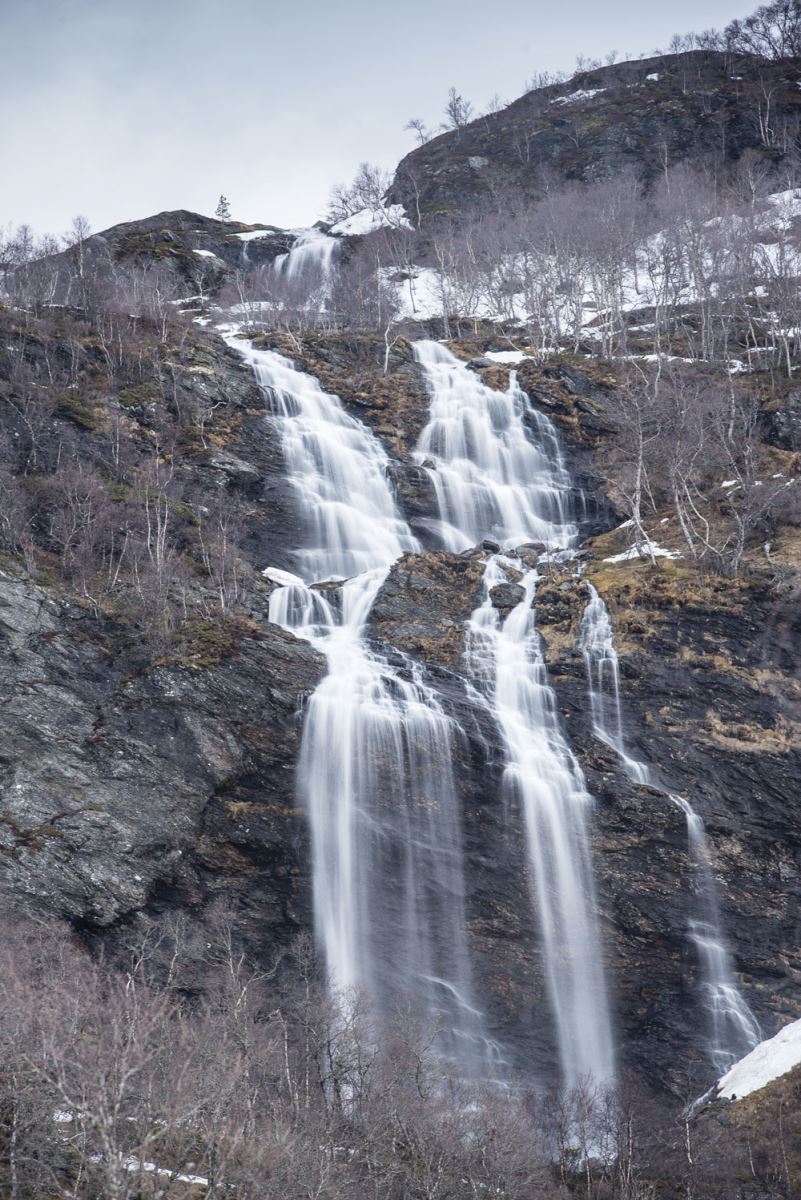
Sand is a lovely little town. The local wharf doubles as free bobilparkering with an amazing view down Sandsfjorden. A short drive into the hills is Fossadn, another spectacular waterfall (pictured above).
Heading towards Bergen, Sundal Camping is well worth a stay. Firstly, Furebergfossen (another waterfall) is a short drive away and, secondly, it is also possible to walk from the site to the Bondhusvatnet (Lake Bondhus) and a remarkable view of the Bondhus Glacier.
Norway seems to have a very high level of motorhome ownership and they get used. I was there during a public holiday and was very lucky to find a pitch although, after the two-day rush, the country was again mine.
Mosjøen looks just like a visitor would describe a Norwegian town with multi-coloured, wooden buildings lining a fjord-based location. Mosjøen Camping is on the edge of the small town, conveniently close to a Rema 1000 supermarket.
A short walk allows exploration of the quaint streets, and I crossed the bridge and took the wide footpath along the western shore of the Vefsnfjord, which gives lovely views of the town on the opposite bank of the fjord.
If I had to pick one place in Norway, it would be this string of islands all joined together by a beautiful road which is, unsurprisingly, a tourist route. The Lofoten Islands and I got off to a great start as, from my pitch in Moskenes Camping, I had the joy of watching a pod of orcas cruise by. Camping just doesn’t get better than that!
To Nordkapp, of course
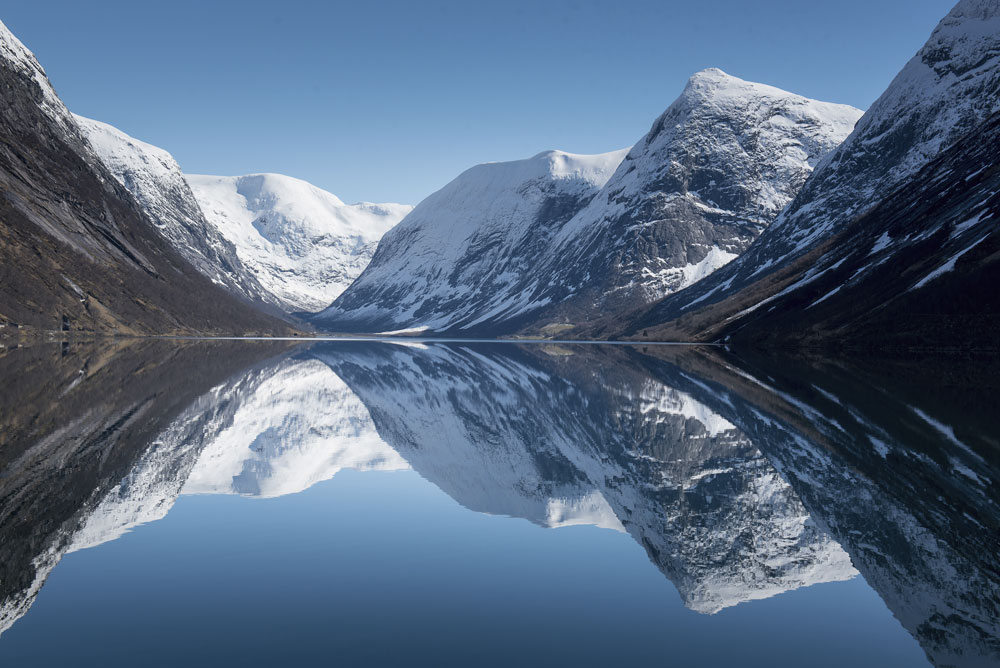
I’m not sure it’s possible to visit Norway and not want to get to Nordkapp, the most northerly point of mainland Europe. I was concerned about the roads, as it’s at 71 degrees north, nearly five degrees past the Arctic Circle.
I took faith in the fact that Norwegians seem to be masters at clearing snow. When required, they regularly plough and spray the main routes.
I eventually arrived at Nordkapp on a late evening at the beginning of May. Twice a day you can wait at the end of the final road and a snowplough will provide an escort, but I was too late. The last few miles were dodgy. The road had been ploughed, but the wind was drifting large volumes of snow. Walking around the cape was bitterly cold in the wind and the snow was up to a metre deep, but I think later in the year it might just have been another headland packed with tourists taking selfies.
I was there for an hour and hoped to camp in the car park. The only other tourist, a young German in his car, obviously had the same idea. It was a forlorn plan as, when the visitor centre closed, the three staff members came over and explained that no one could stay in winter and that they had called the snowplough to escort them (and us) back to the main road.
I stayed for free in considerably better weather in nearby Honningsvåg before heading back for a second visit to Nordkapp early the following morning.
On the way south, Tromsø gave a good opportunity to restock as it’s the largest city in northern Norway. I stayed at Tromsø Camping, which is attached to a sports complex and an easy walk from the city centre.
On the way is the modern Arctic Cathedral, built in 1965. The Tromsø Bridge, which crosses the Tromsøysundet Strait, has a pedestrian walkway which gives excellent views down to the Tromsø waterfront.
The third largest city in Norway, Trondheim is one of those places which is immediately recognisable, as images of the old quay are so often used to advertise both city and country.
The Trondheim Bobilparkering gives 24 hours' free parking, although there are no facilities provided. Getting a space in high season I suspect would be a real challenge. Located on the south bank of the Nidelva River, it’s a lovely walk along the river bank to the old town area.
I visited the Gothic-style Nidaros Cathedral, commenced in 1070 and radiant in a covering of spring flowers. Close by, the storehouses of the old quay are fascinating and at least one can be seen leaning at an alarming angle. At the southern end of the quay is the Old Town Bridge.
Walking east from that landmark up the steep hill is the way to the Kristiansten Festning, a thick-walled fortress finished in 1685 to protect the city. Lots of cannons,
a coffee shop and great views over the city are the rewards for a short, sharp, altitude-gaining hike.
I loved Norway in April, to the point where I stayed for half of May, too. The downsides at that time of year are that the ability to explore the inland mountains is severely restricted and the hiking is significantly limited. Also, much of the free camping was unavailable, especially in the north, as it was covered in snow. Even some campsites were closed, or needed a gentle reminder that the season had started, so it was a case of, “Can you let me in, please?”
On the upside, there was a real sense of adventure about the trip. I felt like I had the place to myself.
The Norwegian landscape is magnificent!
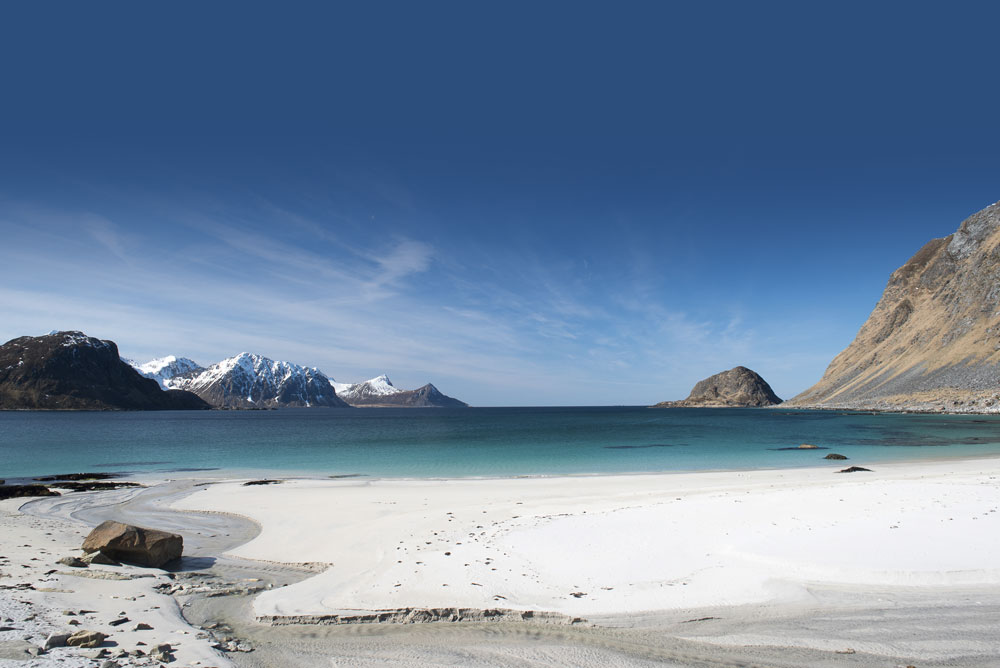
The lowdown
My campervan: 2016 VW Transporter T6 LWB Trendline
Conversion Type: Adventure Trek by Stratford-based Camper King - camperking.co.uk
Owned since: 2016
Layout: Side kitchen, rock 'n' roll style bench/bed
Travel seats/berths: 5/2
What I love about it: It's so flexible. Off-grid camping is aided by two 85Ah leisure batteries, a 65W solar panel on the roof and an Eberspächer diesel heater. I shipped it over from Antwerp in Belgium to Halifax, Nova Scotia, travelling on the same ship as a passenger, and spent a year in the US and Canada, before shipping it back to Europe, using the same shipping service, to embark on the European leg of my road trip.
Where I stayed during my campervan holiday in Norway
Free overnighting
Båly Havn, Lindesnes
N58° 02’ 28” E7° 09’ 14”
Sand Bobilparkering on the wharf
N59° 29’ 06” E6° 14’ 50”
Honningsvåg
N70° 59’ 34” E25° 56’ 35”
Narvik 1940 Memorial Layby
N68° 23’ 06” E17° 15’ 13”
Trondheim Bobilparkering
N63° 25’ 33” E10° 22’ 55”
Campsites at
Brusand Camping 4363 Brusand
brusand-camping
Preikestolen Camping 4100 Jørpeland
preikestolencamping.com
Sundal Camping 5476 Mauranger
sundalcamping.com
Voss Camping 5700 Vossevangen
vosscamping.no
Jølstraholmen Camping 6847 Vassenden
jolstraholmen.no
Steinvik Camping 2390 Moelv
steinvikcamping.no
Volsdalen Camping 6001 Ålesund
volsdalencamping.no
Byskogen camping 6517 Kristiansund
byskogencamping.no
Follingstua Camping 7732 Steinkjer
follingstua.no
Mosjøen Camping 8657 Mosjøen
mosjoencamping.no
Bodøsjøen Camping 8070 Bodø 0047 75 563680
Moskenes Camping 8392 Sørvågen
moskenescamping.no
Ramberg Gjestegård 8380 Ramberg
ramberg-gjestegard.no
Brustranda Sjøcamping 8357 Valberg
brustranda.no
Kvalnesbrygga 8485 Dverberg
kvalnesbrygga.no
Harstad Camping 9411 Harstad
harstadcamping.no
Alta Strand Camping 9518 Alta
altacamping.no
Tromsø Camping 9020 Tromsdalen
tromsolodgeandcamping.no
Saltstraumen Camping 8056 Saltrauen
saltstraumen-camping.no
Furøy Camping 8178 Halsa
furoycamp.no
Sandnessjøen Camping 8800 Sandnessjøen
ssj.no
Namsos Camping 7800 Namsos
namsos-camping.no
Flakk Camping 7070 Bosberg
flakk-camping.no
Mageli Camping 2635 Tretten
magelicamping.no
Bogstad Camping & Turistsenter 0766 Oslo
bogstadcamping.no
Top Tips for taking a campervan holiday in Norway
- Take good-quality walking gear, a good heater and as many supplies as your campervan can carry
- In the low season, Bogstad Camp and Turistsenter is the closest camping to Oslo; it’s a short bus ride to the city centre. In high season there is also a large bobilparkering at the marina
- I found the opening dates of sites to be flexible and governed by the weather. Most had owners or managers living on site or nearby. If you phoned a number, often left on a noticeboard, someone would come along and open up
- I used short-hop ferries to cross fjords. In low season you pay on board, by cash or credit card. In high season some ferries have ticket booths
- Most campsites include electricity and WiFi, but the majority charge for a shower
- I found that credit cards are accepted everywhere
This trip took place prior to the coronavirus pandemic. We are publishing it for your enjoyment and to help you plan your future trips. Read the latest camping travel advice here.
Expert Campervan advice to your door!
Campervan is the exciting monthly magazine that will give you all the inspiration you need to explore the world in your campervan. Every issue is packed with real-life campervanning experiences, inspiring travel ideas in the UK and further afield, the best campsites to stay on, campervan road tests and reviews of the latest models, and much more!
Want to know more about Campervan Magazine?








Recent Updates
Engine management lights: all you need to know
What is the engine management light? What does it mean, and what do I have to do? ...
Motorhome air suspension: all you need to know
Motorhomes are heavy and the additional weight of equipment and height of the bodywork can increase the loads ...
Motorhome WiFi: how to get better motorhome internet
Staying connected on the move is more and more essential, so relying on campsite WiFi isn't an option – here ...
A class of their own - our guide to A-class motorhomes
Thinking of trading up to an A-class, or even going straight to the top of the motorhome tree? We guide you ...
Explore overseas on a motorhome dream tour
Enjoy exotic travel in a campervan or motorhome by hiring, swapping with someone else or exporting your ...
Motorhome water systems: everything you need to know
On-board water is an important part of every motorhome – here’s everything you need to know ...
Campervanning in Europe: what you need to know
Whether you're planning a leisurely drive through the French countryside, navigating bustling city streets in ...
Campervan security: all you need to know
With thefts on the increase, it’s important to know how to keep your campervan secure and prevent campervan ...
Campervan furniture: everything you need to know
Our campervan experts guide you through all the essentials for your campervan, including tables, chairs, ...
Campervan finance: how to fund your purchase
Here we look at the different types of campervan finance available, to help you decide what’s the best option ...
Other Articles
Britain’s best used motorhomes
Want a great motorhome without paying the premium for a new one? Here's a guide to the best you can get in the pre-owned market for each layout, ...
Which motorhome? Choosing the perfect motorhome for you
Choosing a motorhome or campervan is one of the biggest buying decisions you’ll ever make, so it's important ...
Campervan washroom essentials: stay fresh on the road
Our guide will take you through the campervan washroom essentials you'll need so you're well-prepared for ...
Dogs in campervans: all you need to know
Follow our advice and your dog will enjoy campervanning as much as you do ...
Electric campervans: all you need to know
Our guide will take you through everything you need to know about electric campervans and what the future ...
Motorhome electrics: a complete guide to your motorhome electrical set-up
Motorhome electrics can dramatically enhance the convenience and comfort of your vehicle – but they can be ...
Lighting for campervans: all you need to know
We guide you through all the lighting options available for you and your campervan, including interior ...
Electric bikes for motorhomes: our ultimate guide
Read our comprehensive guide to electric bikes for motorhome owners, helping you add electric power to your ...
Our guide to 'cheap' motorhomes in 2024
If you're on the hunt for an affordable new motorhome, this is the best place to start – we've rounded up a ...
Campervans in winter: all you need to know
Here's your guide to preparing your campervan for the colder months, whether you will be using it or putting ...